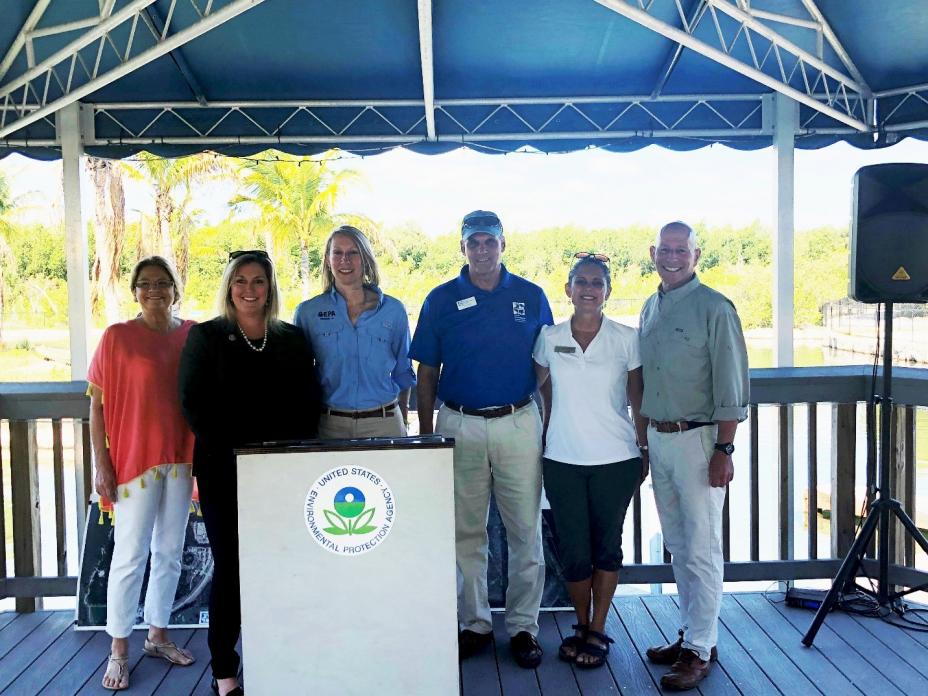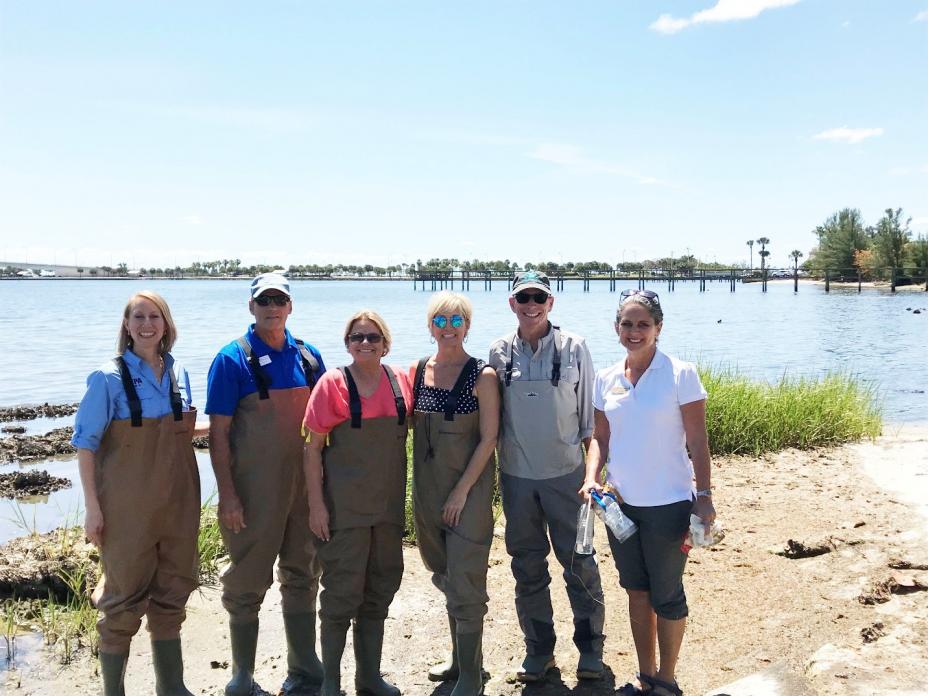EPA and Indian River Lagoon National Estuary Program Recognize Earth Day in Stuart, Florida
Seagrass planted in Indian River Lagoon Estuary to help improve water quality and habitat
EPA and Indian River Lagoon National Estuary Program Recognize Earth Day in Stuart, Florida
Seagrass planted in Indian River Lagoon Estuary to help improve water quality and habitat
Contact Information: Dawn Harris-Young, (404) 562-8421 (Direct), (404) 562-8400 (Main), [email protected]
Stuart, Fla. (April 24, 2019) – Today, the U.S. Environmental Protection Agency’s (EPA) Acting Region 4 Administrator Mary S. Walker, Indian River Lagoon National Estuary Program (IRLNEP) Executive Director Duane De Freese, the South Florida Water Management District (SFWMD) and the Florida Oceanographic Society (FOS) observed Earth Day by planting seagrass in the Indian River Lagoon Estuary to help improve water quality and habitat.
“I’m extremely pleased with progress of the seagrass restoration efforts of the Indian River Lagoon NEP and the Florida Oceanographic Society,” said EPA Acting Region 4 Administrator Mary S. Walker. “This project is a great example of our state, federal and local governments and non-profits working together to restore the critical seagrass habitat to improve water quality and habitat.”
“The EPA has been a strong partner in Indian River Lagoon restoration since we were authorized as an Estuary of National Significance in 1990,” said IRLNEP Executive Director Duane De Freese. “The IRLNEP and Florida Oceanographic Society are pleased to host the Region 4 Acting Administrator to share the challenges we face and showcase the successful seagrass restoration project at FOS that was funded by the IRLNEP”
“Working together with the EPA gives us great hope to increase the diversity and resiliency of the most important aspect of our Indian River Lagoon, our seagrasses,” said SFWMD Governing Board Member Jacqui Thurlow-Lippisch.
Additionally, the project showcased shoal grass research that characterize genetic diversity in the FOS seagrass nursery system and existing genetic diversity of shoal grass in the Indian River Lagoon. This knowledge will be incorporated into seagrass planting experiments to examine the influence of genetic diversity on restoration success and determine optimal size of seagrass plantings. Proper seagrass plantings filter pollutants, absorb excess nutrients from runoff and trap sediments, helping to increase the clarity and quality of waters.
A portion of the seagrass restoration project is funded by EPA’s National Estuary Program through the IRLNEP. This project is part of a larger effort at FOS called the Florida Oceanographic Seagrass Training, Education and Restoration (FOSTER) program, which is unique in that it relies on seagrass fragments, washed ashore by storms or boating activities, as starting material for restoration. The FOSTER program relies heavily on volunteers as citizen scientists in all its components.
Since 1987, the EPA National Estuary Program has made a unique and lasting contribution to the protection and restoration of estuaries on behalf of the nation’s environmental and economic interests. A network of 28 National Estuary Programs is located along the Atlantic, Gulf and Pacific coasts and in Puerto Rico. The NEP employs a watershed approach, extensive public participation and collaborative problem-solving and science-based approaches to address watershed challenges.
To learn more about the Indian River Lagoon National Estuary Program, visit http://www.irlcouncil.com/.
To learn more about the National Estuary Program, visit https://www.epa.gov/nep.

